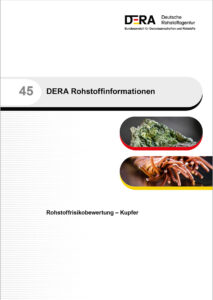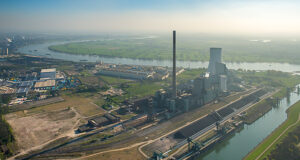Australia
While Australia’s economy was badly hit by the Covid-19 crisis overall, the mining sector, which over the past year incl. supplier sector contributed approximately 15 % to Australia’s gross domestic product, performed quite well. There are many possible reasons. On the one hand, mining was defined as an “essential sector” at the beginning of the crisis due to its great importance for the economy and therefore was able to bypass some restrictions. On the other hand, the demand for raw materials, particularly iron ore, picked up again quickly following the opening of the world’s largest iron producer China and since then has been supporting Australia’s raw material exports. Furthermore, the relatively weak Australian dollar and record prices for gold also help to reduce the effects of the crisis.
Ghana
Mining operations have a very high energy requirement. In West Africa the mines cover their energy requirement from the national grid, they also produce energy themselves using diesel generators. In countries with a low degree of electrification, such as Mali or Burkina Faso, the mining operations often do not have the connection to the national grid and the entire energy requirement must be covered from its own production. This leads to mining operations focusing more and more on generating power from solar systems. In certain countries, such as Ghana, there are currently also regulations in the consultation process, which obligate the mining companies to cover a certain percentage of their energy requirement with renewable energies. On the one hand, these are efforts to relieve the national grid; on the other hand, they are to meet climate objectives. In recent years the investments in solar systems in the region have increased. Newmont Goldcorp, e.g., installed a 120 kWp solar system in their Akyem mine in Ghana. Difficulties arose from the fact that the mine only had a ten-year life, the investment in a solar system has a 25 to 30 year term. Newmont solved the problem by using a mobile system, which can be used at another location following the closure of the Akyem mine. The mining company B2Gold also relies on solar energy in West Africa. A study commissioned by the company estimates that cost savings of up to 7 % can be achieved with the installation of a solar system in the Fekola mine in Mali. Unfortunately the 30 MW solar system project including the storage tank could not be completed in 2020 as planned due to the restrictions imposed by the -Covid-19 pandemic. However, it is expected that the system can be commissioned in the first half of 2021.
The mining sector in West Africa defied the Covid-19 pandemic in 2020 and the stable production figures of the mining companies in the third and fourth quarters of 2020 allow for a positive outlook on 2021. Revenues from the mining sector are essential for many West African countries and the pandemic has once again underlined that the governments in West Africa attach huge importance to the protection of the mining sector. The airports in most West African countries are open again and trips are possible again after providing proof of negative Covid-19 tests. The Competence Centre for Mining and Raw Materials West Africa is therefore optimistic that conferences, trade fairs and business trips can take place again in the region in 2021.
Canada
The Competence Centre for Mining and Mineral Resources organises a workshop on the topic “Wastewater and Mining” in April 2021. Within this framework improvements for wastewater handling in the mining area will be discussed and possible technological solutions will be presented. Mining experts from British Columbia and German experts from the area of wastewater in industrial processes, particularly in mining, are to take part in the workshop. More information will follow shortly.
Peru
The Competence Centre for Mining and Raw Materials of the AHK Peru has once again created a German supplier directory for Peruvian mining. Apart from technologies, products and general services for the mining sector, the new edition contains occupational safety and health protection as a special topic. The new online platform can be found under the link: https://lnkd.in/eV4xghC, the print version can be found at https://lnkd.in/eB4rH-C.
Southern Africa
On the 20th October 2020 the Competence Centre for Mining and Mineral Resources attended a Webinar titled “SADC Mining Industry Post Covid-19” hosted by the Mining Review Journal. The webinar focused on investment sentiments in Zimbabwe, Namibia and South Africa. The key speakers for the webinar were executives from Prospect Minerals (Arcadia Lithium Project, Zimbabwe), Theta Gold Mines (South African gold assets) and Montoro Mining (a Namibia focused exploration company with a focus on Rare Earth Elements).
Key takings from the Webinar were that the SADC mining industry has significant potential for mineral development. From a South African perspective president Ramaphosa recently announced the economic recovery plan which has a focus on increasing competiveness, ensuring electricity supply, improving the regulatory in the mining industry by halving the timeframe for issuances of prospecting and mining rights and the modernization of rail, road and port infrastructure. Namibia is an attractive mining destination in that has a good geological survey, a straight forward mining code that is not changing and relatively good infrastructure. The Zimbabwean government is on drive to create a mining industry worth 12 bn US$ and the government is accessible to investors. Prospect minerals through the help of the government was able to obtain all regulatory approvals for its Arcadia Lithium project within nine months.
DERA

Fig. 1. Cover of the DERA study “Raw material risk assessment – copper”. // Bild 1. Titel der DERA Studie „Rohstoffrisikobewertung – Kupfer “. Source/Quelle: DERA
DERA has been advising economists and politicians for ten years now on issues concerning safe and sustainable raw materials supply. A brochure was published for the anniversary, in which DERA provides an overview of its offers, previous work and future projects.
DERA anticipates an increasing demand for copper in the medium term with increasing supply risks, according to the recently published DERA study “Raw material risk assessment – copper” (Figure 1). Future technologies in particular will have a decisive impact on the copper demand.
Together with the Ministry of Natural Resources (ICMNR) in Beijing/China, DERA compiled a study on the global market for natural graphite. China is currently by far the largest producer of natural graphite.
GTAI
One-off payments, short-time allowances, shareholdings, infrastructure programmes: All over the world governments are busy keeping their economies going, supporting hard-hit industries and mitigating social impacts. They are spending a great deal of money. The 750 bn € package by the EU is probably the most well known. But also in Central Asia, South America or Africa, it is about restarting the economy after lockdowns and supply bottlenecks. Apart from the direct crisis management, future decisions such as increased efforts in climate protection, targeted infrastructure programmes or the funding of individual industries such as medical technology for companies are of particular interest when it comes to the period after the crisis.
Germany Trade & Invest (GTAI) provides an overview in a comparison of the measures in the most important countries on all continents. Who does what? How much money is available? And, above all: What real opportunities are there on international markets for companies? Correspondents at around 50 locations worldwide analysed the programmes and plans and provided detailed information about the individual countries. (GMN/Si.)

